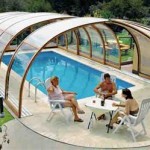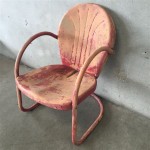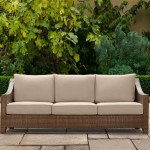Essential Considerations for Selecting Wood for Outdoor Furniture
When adorning your outdoor living space with furniture, the choice of wood is paramount. Different wood species exhibit unique characteristics that can significantly impact the durability, aesthetics, and maintenance requirements of your furniture. Understanding these characteristics is crucial for making an informed decision.
Durability and Weather Resistance
Outdoor furniture must withstand the harsh elements, including rain, snow, sun, and extreme temperatures. The durability of wood is determined by its density, hardness, and decay resistance. Dense hardwoods like teak, eucalyptus, and ipe are highly resistant to moisture, rot, and insects. They can endure years of exposure without significant deterioration.
Softwoods like pine and cedar are less durable but can be treated with preservatives to enhance their resistance to decay and insects. However, these treatments may need to be reapplied periodically.
Aesthetics and Finish
The aesthetic appeal of wood plays a significant role in the overall design of your outdoor living space. Different wood species have distinct grain patterns, colors, and textures. Teak and mahogany boast a rich, reddish-brown hue, while ipe offers a warm, golden-brown color. Oak and cedar exhibit lighter tones with visible grain patterns.
The finish applied to the wood can further enhance its aesthetics. Stains can alter the color of the wood and provide additional protection, while sealants create a protective layer to prevent moisture penetration.
Maintenance and Longevity
Outdoor furniture requires regular maintenance to maintain its beauty and prolong its lifespan. The frequency and intensity of maintenance depend on the wood species and the climate in which the furniture is used. Dense hardwoods like teak require minimal maintenance, while softwoods may need more frequent cleaning, sealing, and touch-ups.
Proper maintenance involves cleaning the furniture regularly, applying sealants and stains as needed, and storing it indoors during extreme weather conditions.
Sustainability
Choosing sustainably sourced wood is an ethical and environmentally conscious decision. Look for woods that are harvested from responsibly managed forests and certified by organizations like the Forest Stewardship Council (FSC) or the Programme for the Endorsement of Forest Certification (PEFC).
Sustainably sourced wood ensures that forests are replenished for future generations and that their biodiversity is protected.
Conclusion
Selecting the right wood for outdoor furniture is a crucial decision that will impact the durability, aesthetics, maintenance, and longevity of your furniture. By considering the factors discussed above, you can make an informed choice that complements your outdoor living space and provides years of enjoyment.

The Best Wood For Outdoor Furniture Solved Bob Vila

Outdoor Furniture Wood Types Buyer S Guide Luxury

9 Mighty Woods For Outdoor Projects Wood

Is Pressure Treated Wood Safe For Outdoor Furniture Thediyplan

The 16 Best Woods For Outdoor Furniture

Best Woods For Outdoor Furniture Blog Plow Hearth

Choosing The Best Wood For Outdoor Furniture Authenteak

9 Wood Species Best For Outdoor Projects

What Is Acacia Furniture How To Care For It My Wicker

What Is Teak Wood Garden Benches Blog
Related Posts








